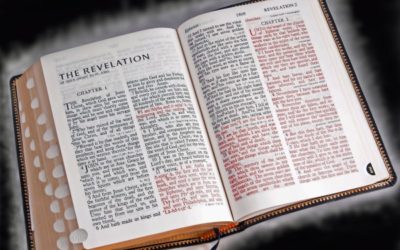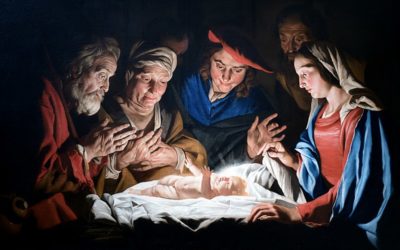Today, we know the restored church as The Church of Jesus Christ of Latter-day Saints. How the Church got that name is an interesting story in itself. The prophet Joseph Smith grew up in an era in which there were many Christian churches with varying names. Before Joseph organized the Church, he translated and published the Book of Mormon. Much of what he understood about Christ’s true Church, including what it should be called, came from what he read in that record. But the name of the Church as we know it today—The Church of Jesus Christ of Latter-day Saints—came line upon line, like so much of the Church’s doctrine.
The Name of the Church in the Book of Mormon
In the Book of Mormon, when Alma organized those he baptized into a church, “they were called the church of God, or the church of Christ” (Mosiah 18:17). Likewise, after Christ’s visit to the Americas, His disciples baptized His followers, “and they who were baptized in the name of Jesus were called the church of Christ” (3 Nephi 26:21). The Three Nephites preached the gospel, and those who “were converted unto the Lord . . . were united unto the church of Christ” (3 Nephi 28:23). Eventually, “the disciples of Jesus had formed a church of Christ in all the lands round about” (4 Nephi 1:1), and it became the only church during the blissful period of more than a century and a half after Christ’s visit.
When apostasy began again after that, “there were many churches which professed to know the Christ” but only one “true church of Christ” (4 Nephi 1:27, 29). That church remained until the end of the Nephite civilization and continued to be called “the church of Christ” (Moroni 6:4).
The Church’s Name in 1830
When the Church was organized on April 6, 1830, it was also called the Church of Christ (Doctrine and Covenants 20:1, 38, 61, 68, 70‒71, 80‒81, 21:11), and that remained its name into 1834 (Doctrine and Covenants 42:78, 102:1, 12, 107:59). Thus, when Joseph Smith’s revelations were first published in book form, they were collectively called A Book of Commandments for the Government of the Church of Christ.
To see the title page of the Book of Commandments and its use of the name Church of Christ, click here.
The Name Changes in 1834
In many ways, the Church of Christ was an excellent name for the church restored through Joseph Smith. But in modern business parlance, you could say that it lacked distinctiveness. A person in the 1830s who heard that name might have confused the Church with other churches, particularly those that grew out of the nineteenth-century movement to return to original, Bible-based Christianity with which Sidney Rigdon was previously associated.
Thus, it is not surprising that at a conference of elders in Kirtland, Ohio, on May 3, 1834, Sidney proposed changing the Church’s name. According to the minutes of that meeting, “The Conference came to order, and Joseph Smith Jr. was chosen Moderator, and Frederick G. Williams and Oliver Cowdery, were appointed clerks. After prayer the Conference proceeded to discuss the subject of names and appellations, when a motion was made by Sidney Rigdon, and seconded by Newel K. Whitney, that this church be known hereafter by the name of THE CHURCH OF THE LATTER DAY SAINTS. Appropriate remarks were delivered by some of the members, after which the motion was put by the Moderator, and passed by unanimous voice.”
The conference also resolved that other units of the Church be informed about the decision and that “minutes and proceedings” of those units in the future “be made out under the above title.” It must have seemed like a great decision at the time. At last the Church had a distinctive name that helped people know that this was the restored Church.
For an example of the use of this name on the title page of the first edition of the Doctrine and Covenants, published in 1835, click here.
The Lord Corrects the Name in 1838
The Lord is very patient with His Church, just as he is patient with all of us as individuals and allows us to make mistakes and then change and grow for the better.
The 1834 change in the Church’s name generated controversy among members who undoubtedly read Christ’s commandment to His disciples in the Book of Mormon to “call the church in my name,” for “how be it my church save it be called in my name?” (3 Nephi 27:7‒8). Their point was a good one. This really was Christ’s true Church, but it no longer carried His name.
Finally, on April 26, 1838, in Far West, Missouri, the Lord gave Joseph Smith a revelation that resolved the controversy by combining the two names: “For thus shall my church be called in the last days,” the Lord declared, “even The Church of Jesus Christ of Latter-day Saints” (Doctrine and Covenants 115:4).
For an example of the use of this name on the title page of the second edition of the Doctrine and Covenants, published in 1844, click here.
Capitalization and Punctuation
The current edition of the Doctrine and Covenants gives the Church’s revealed name in section 115 as “The Church of Jesus Christ of Latter-day Saints,” with the capital T, hyphen, and lowercase d that are standard today. But it actually took many decades to get to that capitalization and punctuation. When Joseph Smith dictated the revelation in 1838, a scribe wrote the Church’s name as “the Church of Jesus Christ of Latter Day Saints.”
The truth is that people weren’t as particular in those days about capitalization, punctuation, and even spelling as we are in our modern world today. They sometimes seemed to care more about how a name sounded that how it was written on paper or printed. People might even spell their own names in different ways over time. Without going into all the details here, suffice it to say that it took well into the twentieth century for us to settle on how we wrote the Church’s name. But it’s settled now. We write it, “The Church of Jesus Christ of Latter-day Saints.”
What About the Name Mormon?
How did members of the Church come to be known as Mormons? Joseph Smith translated and published the Book of Mormon before he organized the Church in 1830, and over time, those who accepted Joseph as a prophet and believed in the Book of Mormon were called Mormonites or Mormons, from the title of the Book of Mormon.
To many people, this was a derogatory name. But, of course, the prophet Mormon who compiled the book named after him was a good man, and the waters of Mormon that he admiringly describes in Mosiah 18:30 is the place where Alma organized the Church of Christ in the Book of Mormon.
William W. Phelps, who considered himself quite a linguist, told Joseph Smith that mon meant “good” in Egyptian, a language in which Phelps was not competent. If mon meant “good,” he reasoned (adding English to the mix), then Mormon must mean “more good.” Joseph used Phelps’s definition, perhaps tongue in cheek, in a letter published in 1842 to combat those who claimed Mormon was of Greek extraction.
Joseph quoted what is now Mormon 9:34, in which Moroni said “none other people knoweth our language.” Joseph concluded, “Therefore the Lord, and not man, had to interpret, after the people were all dead”—another way of saying no one could make sense of the term Mormon by relying solely on modern linguistic understanding.
Using the Lord’s Name for His Church
In the twentieth century, Church leaders became increasingly concerned about the importance of members using the correct name of the Church. For example, in 1979, President Marion G. Romney of the First Presidency spoke on the topic in general conference. In 1990, six years after being sustained as a member of the Quorum of the Twelve, then Elder Russell M. Nelson gave a general conference talk on the subject.
Concern about this matter has extended now into the twenty-first century. Another member of the Twelve, Elder M. Russell Ballard, reiterated the importance of using the Church’s correct name in a 2011 conference address. In August 2018, a few months after becoming Church President, Russell M. Nelson issued a statement in which he said: “The Lord has impressed upon my mind the importance of the name He has revealed for His Church, even The Church of Jesus Christ of Latter-day Saints. We have work before us to bring ourselves in harmony with His will. In recent weeks, various Church leaders and departments have initiated the necessary steps to do so. Additional information about this important matter will be made available in the coming months.”
In the October 2018 general conference, President Nelson emphasized the matter again in one of his addresses. To pundits who criticized his earlier announcement, he responded: “It is not a name change. It is not rebranding. It is not cosmetic. It is not a whim. And it is not inconsequential. Instead, it is a correction. It is the command of the Lord.” Over the course of 2018 and 2019, many changes were made to comply with the Prophet’s mandate.
In March 2019, the First Presidency sent a letter to priesthood leaders about using the Church’s correct name. Before and after that letter, Church organizations made numerous changes to comply with the Prophet’s directions.
Preserving Mormon Where Appropriate
After President Nelson released his August 16, 2018, statement about using the correct name of the Church, he spoke about it in his travels. To one group of media representatives, he said, “We have to be careful to protect the name ‘Mormon.’ The media will think that we are tossing it out. We aren’t. We just want to be accurate. Mormon was a man. He was a prophet. He was a writer, a record keeper. We honor him and treasure the book that bears his name. We’re talking about the name of the Church.”
The Church style guide also noted, “‘Mormon’ is correctly used in proper names such as the Book of Mormon or when used as an adjective in such historical expressions as ‘Mormon Trail.'”
The First Presidency has successfully led the effort to use the revealed name of the Church inside the Church, while still protecting the name “Mormon” where appropriate, and their efforts have affected usage outside the Church as well. The First Presidency’s efforts will continue to bear fruit over time.
Saints, Not Mormons
Some argue that the one-word term Mormon is easier to use than Latter-day Saint and so will continue to be used by members and nonmembers alike. But there is another one-word term used in the Old Testament, New Testament, Book of Mormon, and Doctrine and Covenants that applies to members of Christ’s true Church. It is the word Saints. Official Church publications such as the new history Saints: The Story of the Church of Jesus Christ in the Latter Days may yet change Church members’ parlance, and their consistent use of the term will affect others as well.
“We May Never Convert the World”
“I suppose that regardless of our efforts, we may never convert the world to general use of the full and correct name of the Church,” said Gordon B. Hinckley in 1990 as a counselor in the First Presidency. President Hinckley remembered a half century earlier on his mission when a Church member quoted the idea that Mormon meant “more good.” “I knew, of course,” President Hinckley said, “that ‘more good’ was not a derivative of the word Mormon.” But the young Elder Hinckley liked the Church member’s positive attitude, and said, “Ever since, when I have seen the word Mormon used in the media to describe us—in a newspaper or a magazine or book or whatever—there flashes into my mind his statement, which has become my motto: Mormon means ‘more good.’
“We may not be able to change the nickname,” President Hinckley said, “but we can make it shine with added luster. After all, it is the name of a man who was a great prophet who struggled to save his nation, and also the name of a book which is a mighty testament of eternal truth, a veritable witness of the divinity of the Lord Jesus Christ.”
Text
Credit for image at top of post: Stock image from depositphotos.com.



